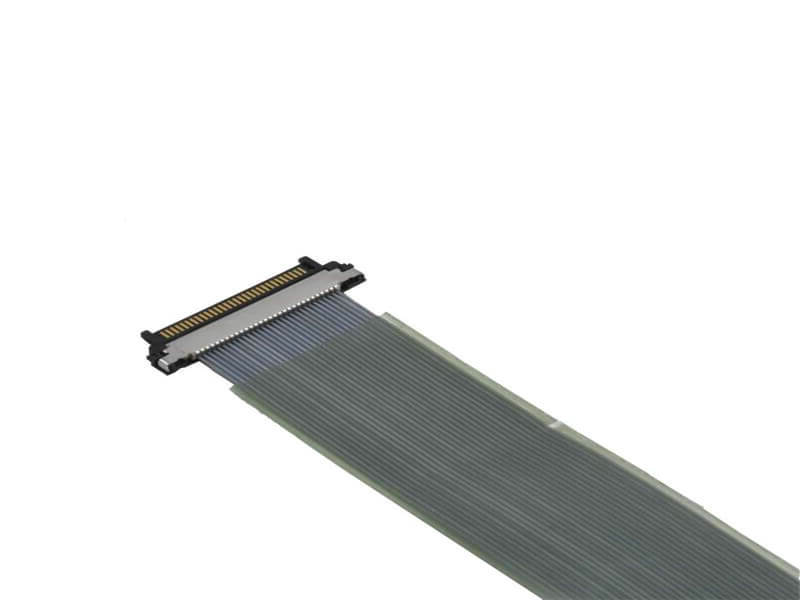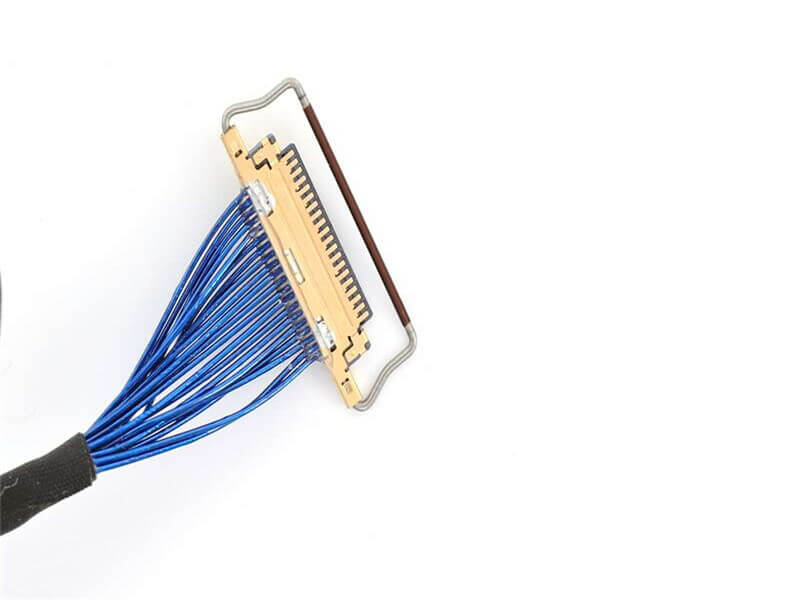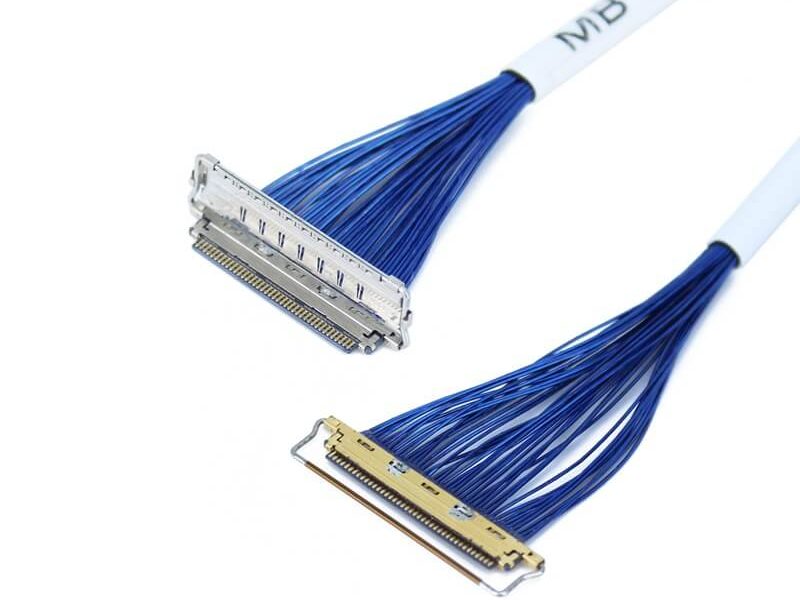Transmission Performance of Micro-Coaxial Cables
- Key Parameters Defining Transmission Performance
1.1 Frequency Range and Bandwidth
Micro-coaxial cables are optimized for high-frequency signal transmission, typically supporting frequencies from DC to 40 GHz or higher. Their bandwidth depends on:
Conductor Design: Solid or stranded copper cores (often silver-plated) reduce skin effect losses at high frequencies.
Dielectric Material: Low-loss insulators like PTFE (εr ≈ 2.1) or foamed polyethylene minimize signal attenuation.
For example, ultra-miniature cables (0.3 mm diameter) used in 5G mmWave applications maintain a bandwidth of 50 GHz with insertion loss below 0.5 dB/cm at 30 GHz.
1.2 Attenuation and Loss Characteristics
Signal attenuation in micro-coaxial cables arises from:
Conductor Resistance: Governed by the skin depth effect, especially above 1 GHz.
Dielectric Loss: Energy absorbed by the insulating material, quantified by its loss tangent (tan δ).
Radiation Loss: Minimal due to robust shielding.
High-performance cables achieve attenuation as low as 0.1 dB/m at 1 GHz, critical for long-distance data links in aerospace or medical imaging.
1.3 Impedance Stability
A consistent characteristic impedance (typically 50 Ω or 75 Ω) ensures minimal signal reflections. Variations in impedance (<±2 Ω) are controlled through:
Precision Manufacturing: Uniform conductor diameter and dielectric thickness.
Shielding Integrity: Tightly woven braided shields or dual-layer foil designs prevent impedance fluctuations caused by external EMI.
2. Factors Influencing Transmission Performance
2.1 Material Selection
Conductor: High-purity oxygen-free copper (OFC) or silver-plated copper enhances conductivity.
Dielectric: PTFE offers low tan δ (0.0003 at 10 GHz), while polyethylene balances cost and performance.
Shield: Multi-layer shields (e.g., aluminum foil + tinned copper braid) achieve >90 dB EMI suppression.
2.2 Environmental Conditions
Temperature: PTFE-insulated cables operate stably from -65°C to +200°C, avoiding dielectric degradation.
Flexibility: Dynamic applications (e.g., robotic arms) require cables with bend radii <5× diameter and >100,000 flex cycles.
Moisture and Chemicals: Fluoropolymer jackets resist hydrolysis and corrosive fluids, maintaining performance in harsh environments.
2.3 Connector and Termination Quality
Poorly terminated connectors introduce impedance mismatches and VSWR (Voltage Standing Wave Ratio) >1.5, degrading signal quality. Laser-welded or crimped connectors ensure:
Low Contact Resistance: <10 mΩ. High Return Loss: >20 dB at 20 GHz.
3. Performance Optimization Techniques
3.1 Advanced Shielding Designs
Tri-Shield Technology: Combines foil, braid, and drain wire for >100 dB EMI/RFI isolation.
Semi-Rigid Construction: Solid outer shields in aerospace-grade cables eliminate flex-induced signal loss.
3.2 Low-Loss Dielectric Innovations
Air-Spaced Insulation: Reduces dielectric constant (εr ≈ 1.0) for ultra-high-frequency applications.
Nano-Ceramic Coatings: Applied to conductors to suppress surface oxidation and minimize resistance.
3.3 Signal Equalization and Compensation
Pre-Emphasis: Boosts high-frequency signals in long cables to counteract attenuation.
DSP-Based Correction: Used in medical endoscopes to restore distorted video signals.
4. Application-Specific Performance Benchmarks
4.1 High-Speed Data Transmission
6G Research: Micro-coaxial cables with 67 GHz bandwidth enable terahertz signal testing.
HD Endoscopy: 4K video transmission at 12 Gbps with BER (Bit Error Rate) <10-12.
4.2 RF and Microwave Systems
Radar Arrays: Phase-stable cables with ±0.5° phase matching over 18–40 GHz.
Satellite Communications: Group delay variation <1 ps/m up to 30 GHz.
4.3 Medical Diagnostics
MRI Coils: Cables with <0.1 dB loss at 3 Tesla (128 MHz) ensure high SNR (Signal-to-Noise Ratio).
Intravascular Ultrasound: 40 MHz signals transmitted over 2-meter cables with <3 dB total loss.
5. Future Trends and Challenges
5.1 Emerging Technologies
Photonic-Coaxial Hybrids: Integrating optical fibers with micro-coaxial cables for ultra-wideband systems.
Graphene Conductors: Theoretical attenuation reduction by 50% compared to copper.
5.2 Sustainability Demands
Recyclable Materials: Bio-based dielectrics and lead-free shielding to meet RoHS/REACH standards.
5.3 Miniaturization Limits
Pushing outer diameters below 0.1 mm without compromising shielding remains a key challenge.





